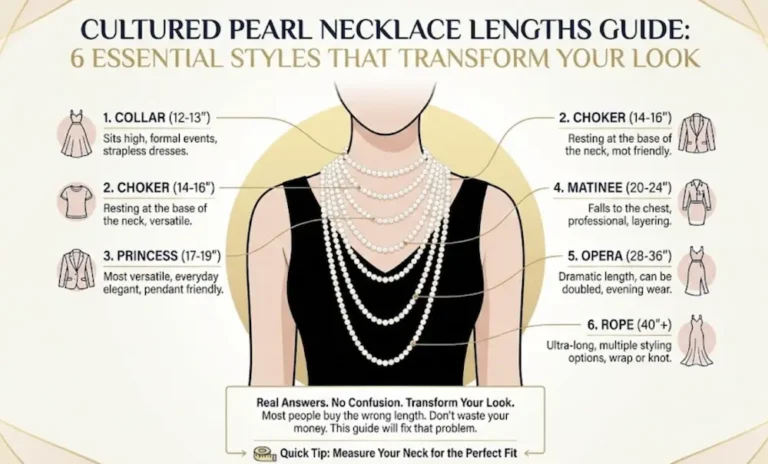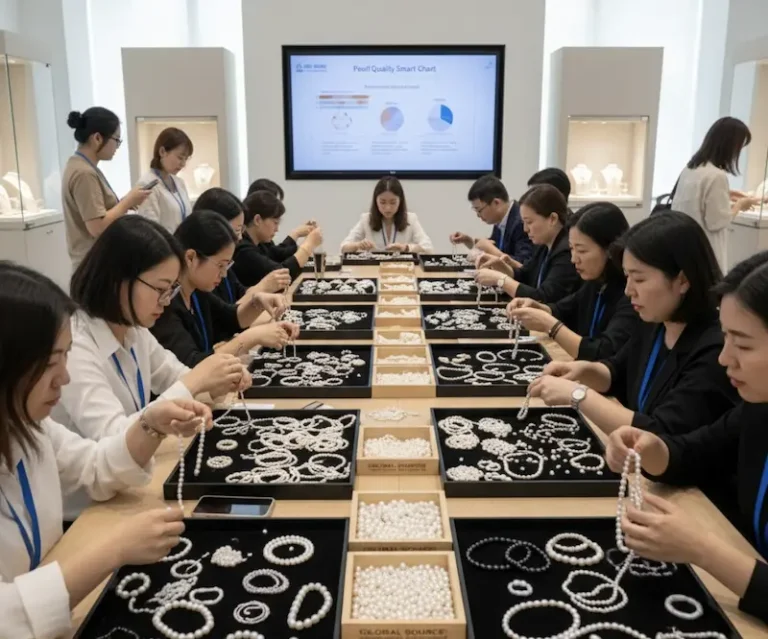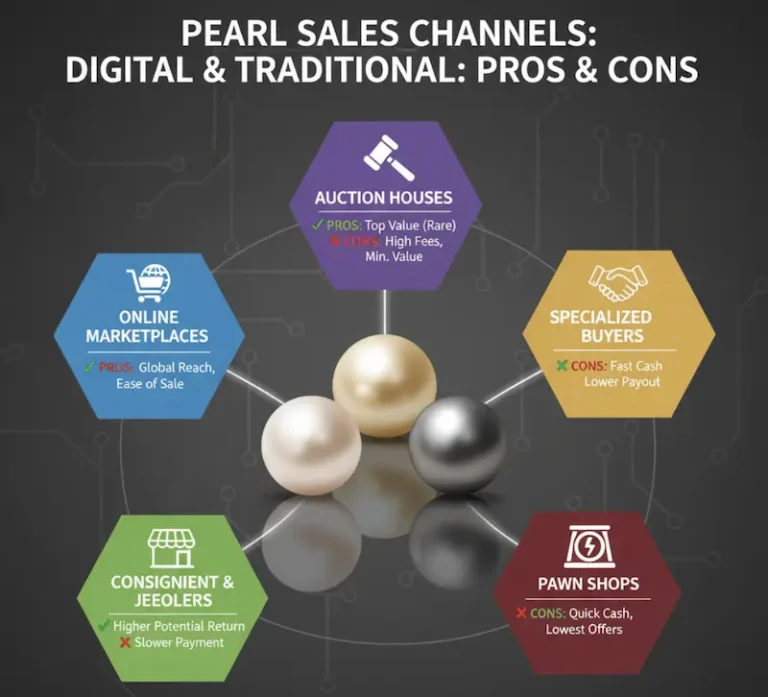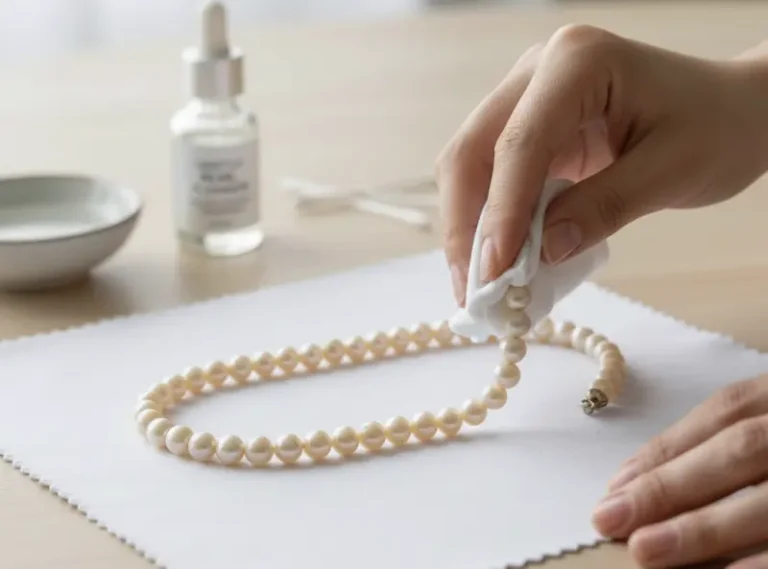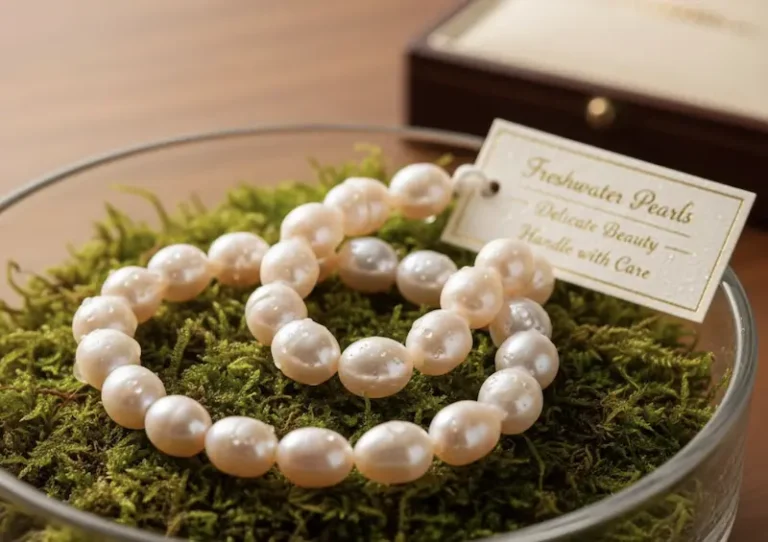Looking to buy freshwater pearl beads in bulk? You’re in good company. Whether you’re designing jewelry, running a craft business, or just stocking up for your store, understanding the wholesale market can save you big bucks. But here’s the catch: not all wholesale prices are the same. Knowing what affects those prices, as outlined in our freshwater pearl beads wholesale Price Guide, can really make or break your profits.
The wholesale pearl market has evolved dramatically over the past decade. With more direct connections between Pearl Manufacturer operations and buyers, prices have become more competitive. Yet, many newcomers still overpay simply because they don’t know what questions to ask or which quality indicators matter most.
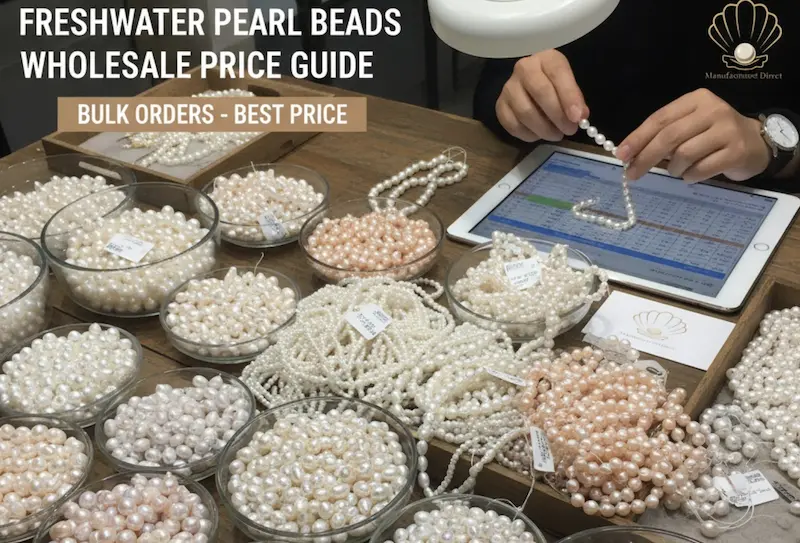
Understanding Freshwater Pearl Quality Grades and Their Impact on Wholesale Pricing
Quality matters. A lot. When you’re ordering freshwater pearl beads wholesale, the grade directly affects your cost per strand—and your potential markup. Just so you know, the pearl world uses a few different ways to grade pearls. There’s no single, official system that everyone uses (which can be a pain, I get it).
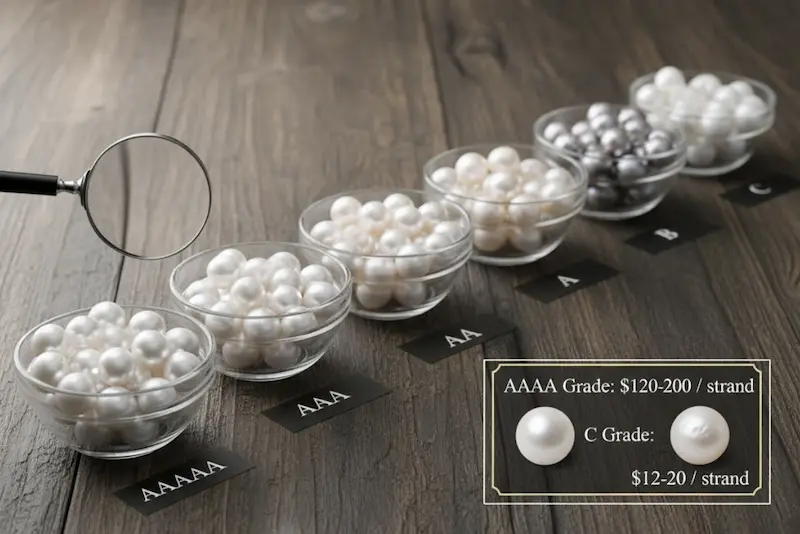
Most trustworthy wholesale pearls sellers use a letter grading system to describe their pearls: AAAAA, AAAA, AAA, AA, A, B, and C. AAAAA is the best of the best – almost perfect surfaces, amazing shine, and a really consistent shape. These top-notch pearls can cost three to five times more than C-grade pearls. So, is paying that much extra really worth it? That depends on your target market and the type of jewelry you’re creating.
Surface quality is the first thing buyers notice. Pearls with smooth, blemish-free surfaces command premium prices in the wholesale market. Even the smallest flaws – like tiny pits, wrinkles, or a slight change in color – can really lower a pearl’s quality grade, and its price. As detailed in the freshwater pearl beads wholesale price guide, a string of top-quality (AAAA grade) 7−8mm round freshwater pearls might cost $120−$200 wholesale. But a similar string of lower-quality (C grade) pearls could go for as little as $12−$20.
Table 1: Freshwater Pearl Wholesale Price Ranges by Grade
| Grade | Surface Quality | Luster | Price Range (per 15″ strand, 7-8mm) |
|---|---|---|---|
| AAAAA | 99%+ clean surface | Exceptional, mirror-like | $150-$250 |
| AAAA | 95-99% clean | Excellent | $120-$200 |
| AAA | 90-95% clean surface | Very good to excellent | $80-$150 |
| AA | 85-90% clean | Very good | $40-$80 |
| A | 75-85% clean | Good | $25-$45 |
| B | 65-75% clean | Fair to good | $15-$28 |
| C | Below 65% clean | Fair to poor | $12-$20 |
Luster—that gorgeous glow that makes pearls so captivating—is equally important. High-luster pearls reflect light beautifully, creating that sought-after luminous quality. According to the Gemological Institute of America (GIA), luster is one of the most crucial value factors because it directly impacts a pearl’s visual appeal. Pearls with dull or chalky surfaces, regardless of size, will always wholesale for less.
What Determines Freshwater Pearl Beads Wholesale Prices?
Size. Shape. Color. These three things together create a pricing system that might seem confusing at first. But once you get the hang of the basics, as explained in the freshwater pearl beads wholesale price guide, you’ll be able to make better deals and avoid paying too much for your pearls.
When it comes to size, it’s pretty simple: bigger pearls cost more. Just a millimeter difference can increase the wholesale price by 20-50%. For example, a strand of round pearls that are 6-7mm might cost you $30 wholesale, but a strand that’s 11-12mm could easily go for $200 or more. Why? Larger pearls take longer to cultivate and are less common. Simple supply and demand.
The shape of a pearl can actually be a great way to save some money. While everyone loves perfectly round pearls, slightly off-round, oval, or even potato-shaped freshwater pearls are much cheaper – sometimes 40-60% less! And speaking of unique, baroque pearls, with their funky, irregular shapes, are super popular with designers right now. Even though they might be priced 50-70% below similar quality round pearls, they can be used to create some really beautiful and one-of-a-kind jewelry.
Color can influence pearl prices in some surprising ways. Natural white and creamy pearls are usually in the middle of the price range. But wholesale prices for rarer, more unusual colours like peacock (that deep greenish-black colour), lavender, or even Edison pearls (those big, single-nucleated ones) can be a lot higher because they’re harder to find and people really want them. If you want to run an honest business, you should be open and honest about the dyeing process. Dyed pearls are usually the least expensive option, as noted in the freshwater pearl beads wholesale price guide.
How to Find Reliable Freshwater Pearl Beads Wholesale Suppliers
Finding trustworthy pearl suppliers separates successful jewelry businesses from frustrated ones. I’ve seen too many designers burn through capital on low-quality inventory from unreliable sources. Here’s what actually works.
Direct manufacturer relationships offer the best wholesale prices—period. As discussed in the freshwater pearl beads wholesale price guide, buying directly from a pearl manufacturer can cut out the middleman and potentially save you 30−50% on costs. China is still the biggest producer of freshwater pearls, especially around the Zhejiang and Hunan provinces. If you can build relationships with Chinese pearl farms or their official distributors, you’ll likely get access to better prices and a wider selection.
Trade shows are great for meeting suppliers and making connections. Every year, big pearl wholesalers come to big shows like the JCK Las Vegas show, the Hong Kong International Jewellery Show, and the Tucson Gem & Mineral Show. You can see the pearls’ quality in person, compare prices from different sellers, and even ask for a discount if you’re buying a lot of them. Also, you’ll meet people in the industry who might be able to help you get even better deals in the future.
It’s easier for anyone to buy wholesale pearls now that there are online wholesale marketplaces, but you need to be careful. Check that the seller has a valid business license, read reviews from different sites, and always order samples before you buy a lot of pearls. A good online pearl wholesaler will give you a lot of information about the pearls, show you real pictures of what they’re selling (not just stock photos), and have a clear return policy.
Here’s what to watch out for when dealing with suppliers, as these are red flags:
- Suspiciously low prices:** If their prices are way cheaper than everyone else, be wary. It’s probably not a good deal.
- No Paperwork: Red flag! If they won’t give you certifications or details about the pearl quality, steer clear.
- Strange rules for samples: Be careful if they don’t give you samples or if you have to buy a lot just to see how good it is.
- Dodgy communication: If they’re hard to get ahold of or can’t give you clear answers about where the pearls come from, that’s another red flag.
Minimum Order Quantities and Volume Discounts Explained
Knowing the minimum order quantity (MOQ) is important for managing your budget when you’re buying pearls. As outlined in the freshwater pearl beads wholesale price guide, when you’re buying wholesale freshwater pearls, the suppliers will usually have a minimum order. You might have to pay a certain amount of money or purchase a minimum number of strands.
This is how MOQs usually work:
- Smaller Wholesalers: They might want you to buy at least 5 to 10 strands with each order.
- Suppliers of Medium Size: You should expect to pay between $200 and $500.
- Big Manufacturers: These guys may need a bigger first order, like $1,000 to $5,000. The good news is that you’ll get the best deals.
Volume discounts follow tiered structures. Here’s a realistic example from a mid-sized wholesaler:
Table 2: Volume Discount Structure Example
| Order Value | Discount | Effective Savings |
|---|---|---|
| $200-$499 | 0% (base price) | – |
| $500-$999 | 10% off | $50-$99 |
| $1,000-$2,499 | 15% off | $150-$374 |
| $2,500-$4,999 | 20% off | $500-$999 |
| $5,000+ | 25% off + negotiable | $1,250+ |
Savvy buyers play the system. Instead of placing lots of small orders, try to combine your purchases to unlock better discounts. For example, if you’re just $100 short of getting a 15% discount, figure out if buying a bit more stock is worth it, considering how quickly you sell your pearls. Think about it: is the extra stock a smart investment based on your sales speed?
Seasonal Pricing Fluctuations and Best Times to Buy
Timing your wholesale pearl purchases can save you a lot of money. As detailed in the freshwater pearl beads wholesale price guide, the market for freshwater pearls usually follows patterns that repeat every year, and smart buyers use these patterns to their advantage.
The best time to find deals is usually right after the holidays, like in January and February or July and August. After the big shopping rushes are over, suppliers often want to get rid of their stock. This means they’ll frequently slash wholesale prices by 10-20%. So, if you’re on the ball and have a place to keep the extra stock, you can really save some cash by buying then!
Keep in mind that Chinese New Year really shakes up the supply chain. Pearl farms and wholesalers in China usually shut down for 2-3 weeks around late January to mid-February. If you place orders 6-8 weeks before the holiday, you might snag a small discount as suppliers try to clear out stock. But if you order *during* the holiday, expect delays. And if you wait until immediately after, be prepared for potentially higher prices because everyone else is trying to catch up!
Heads up! Wedding season (April to September in the West) means everyone’s after those classic round, white, and cream pearls. Because of the high demand, as noted in the freshwater pearl beads wholesale price guide, you might see their prices jump up by 5−15% during those busy months. On the flip side, this could be a good time to snag a deal on baroque, colored, or larger freshwater pearls, since suppliers will be focusing on stocking the popular wedding styles.
Quality Inspection Tips When Buying Wholesale
Never skip quality inspection. Ever. Even when ordering from established suppliers, batch variation occurs. Making a systematic inspection plan, as recommended in the freshwater pearl beads wholesale price guide, protects your reputation and your money.
The first step is to look at it. When you look at pearls, use steady light, like natural daylight or full-spectrum bulbs. Roll each strand slowly and check to see if the surface is smooth. Look for:
- Blemishes, pits, or roughness: Some imperfections are normal, but they should match the product’s quality grade.
- Colour consistency: Some variation is normal, but big differences could mean that the strand is made up of pearls from different batches.
- Drill holes: Clean, centred holes show that the work was done well.
There is a simple trick for testing lustre. Hold the strand at arm’s length and see how clearly you can see the reflections on the pearl’s surface. High-quality pearls should reflect light sharply, almost like tiny mirrors. According to the Gemological Institute of America (GIA), excellent luster creates sharp, bright reflections, while poor luster appears milky or dull.
Touch reveals information too. Roll pearls between your fingers. They should feel slightly gritty or textured—completely smooth surfaces might indicate heavy treatment or artificial coating. Temperature can also be a clue; real pearls feel cool at first and then warm up to your skin temperature, which is a key point in the freshwater pearl beads wholesale price guide.
Okay, here’s your quick quality checklist when you’re inspecting wholesale pearls:
- Surface: Is the surface quality what you’d expect for the grade being claimed? You’ll probably need a magnifying glass if you’re looking at AAAAA or AAAA grades.
- Color: Is the color consistent throughout the whole strand? A little natural variation is fine.
- Luster: Is the shine what you’d expect for the price? Higher grades should have really sharp reflections.
- Drill holes: Are the holes centered and clean?
- Knotting: If the pearls are already strung, is the knotting secure?
- Size: Are the pearls the size they’re supposed to be? Use digital calipers to be sure.
Calculating Your True Cost and Markup Strategy
The wholesale price is just the beginning. A smart jewelry business figures out the total landed cost before deciding how much to charge in the store. This way, you don’t accidentally set your prices too low and lose money, a concept reinforced in the freshwater pearl beads wholesale price guide.
So, the total cost of those wholesale pearls isn’t just the price you see at first. You also need to factor in these things:
- The initial price of the pearls
- Shipping costs
- Import taxes (if you’re buying from overseas)
- Fees for processing the payment
- The time you spend checking the quality
- Storage costs
All of these extras can easily raise the base wholesale price by 15% to 30%. If you buy a strand for $50, it might end up costing you $60 to $65 by the time you’re done. Don’t forget about those extra costs!
How much you mark up your jewelry really depends on where you see yourself fitting in the market:
- Budget-friendly brands: Usually go for a 2-3x markup (basically doubling or tripling the cost).
- Mid-range designers: Typically aim for a 3-5x markup.
- High-end luxury brands: Can often get away with a 5-10x markup (or even higher!). They can do this because people are paying for the brand name, unique designs, and the feeling of owning something exclusive.
Okay, let’s walk through a real-world example:
You buy a strand of really nice (AAAA-grade) 8-9mm round freshwater pearls for $150 wholesale (about 50 pearls on the strand). After you factor in all those extra costs we talked about, the real cost to you (the “landed cost”) is $172.
Now, you make a simple pearl necklace using that one strand. You also need $10 worth of clasps and other bits and pieces (“findings”), and it takes you 2 hours to make at $25 an hour (so $50 in labor).
That means the total cost to you to make that necklace is $232.
If you want to use a 4x markup (a pretty common idea), you’d price that necklace at $928. That’s actually a reasonable price for high-quality freshwater pearl jewelry these days.
Building Long-Term Supplier Relationships for Better Pricing
Basically, when it comes to buying wholesale: loyalty pays! As detailed in the freshwater pearl beads wholesale price guide, once you’ve proven you’re a reliable customer who buys regularly, suppliers will start offering you better deals, discounts, and pricing that you’d never get as someone who only buys from them once in a blue moon.
Here’s how payment usually works when you’re building a relationship with a supplier:
- Starting out: As a new customer, expect to pay upfront. This often means using a wire transfer or credit card to pay before they ship your order.
- Building trust: After you’ve placed and paid for 3-5 orders successfully, you can ask for “net-30” terms. This means you have 30 days after you receive your order to pay the invoice. This can really help your cash flow!
- Long-term relationship: If you become a long-term customer and always pay on time, you might even be able to negotiate “net-60” or even “net-90” terms, especially on those big orders. That gives you a lot more breathing room with your money.
Getting cozy with a supplier can actually unlock some serious perks. Sometimes, if you promise to buy a certain amount from them each year (like committing to spend, say, $10,000 to $25,000), they might offer you:
- Protected pricing: This means they won’t raise prices on you, even if prices go up for everyone else.
- First dibs: You get to see and buy their best, most exclusive stuff before anyone else does.
That kind of commitment could get you an extra 5-10% discount, plus it means you jump to the front of the line when everyone’s scrambling to buy during the busy seasons.
Communication matters more than people realize. Regular check-ins with your supplier rep (even when you’re not ordering) build rapport. Share your business growth and future plans. When suppliers understand your trajectory, they’re more likely to offer favorable terms, extend credit, or provide marketing support, a tactic consistently advised in the freshwater pearl beads wholesale price guide.
Common Mistakes to Avoid When Ordering Freshwater Pearl Beads Wholesale
Experience is expensive, but learning from others’ mistakes is free. Here are the costly errors I’ve seen repeatedly in the wholesale pearl business.
Over-ordering trendy colors or shapes is tempting but risky. That gorgeous peacock-colored freshwater pearl beads wholesale lot might seem like a goldmine today, but fashion preferences shift quickly. Unless you have confirmed customer demand, order conservatively. It’s better to reorder popular items than to have dead inventory tying up capital.
Ignoring strand consistency creates production headaches. When buying multiple strands for a single project, ensure they’re from the same lot or harvest. Pearl characteristics vary between batches—even from the same supplier. It can be very hard to find matching parts for sets because strands can be different colours, sizes, and lustres.
Listen up – skimping on samples to save a few bucks is a bad idea. I know, those sample costs can add up, but think of them as insurance against some seriously costly screw-ups.
Spending $20-$50 on a sample now could save you from wasting $2,000 on a whole bunch of inventory you can’t use later.
Seriously, always get a sample before placing a big order, especially if you’re working with a new supplier or buying a grade of product you haven’t used before. As emphasized in the freshwater pearl beads wholesale price guide, it’s just not worth the risk!
FAQs
What are the key factors that determine the wholesale price of freshwater pearl beads?
The price is primarily driven by the Four Virtues of Pearls (Luster, Surface Cleanliness, Shape, and Size). Emphasize the impact of Grade (AAA/AAAA/AAAAA) and Size (e.g., 10mm+ beads command exponential price increases) as the top influencers.
As a B2B buyer, how does sourcing from a manufacturer like Xinye Jewelry reduce our cost per unit?
Highlight your vertical integration. Explain that sourcing Direct from the China Pearl Farm eliminates several middle layers (exporters, distributors, brokers), allowing you to pass significant cost savings to the wholesale buyer.
Do you offer sample kits or GIA/GIC certifications for my first large-volume order?
State your Sample Policy (e.g., small, representative samples available for a nominal fee, deductible from the first bulk order). Confirm the availability of third-party certifications for authenticity and grading verification.
Conclusion: Strategic Buying for Sustainable Profit Margins
To really make it in the freshwater pearl bead wholesale business, you need a mix of things: smarts, connections, and good timing. It’s all about following the advice in the freshwater pearl beads wholesale price guide:
- Knowing your stuff: Understanding the different pearl quality grades is key. Knowing what’s fair: Being able to spot a good price (and avoid getting ripped off).
- Playing the long game: Building strong, trustworthy relationships with your suppliers is what will really set you apart from the competition in the long run.
Here’s the best way to get started:
Don’t jump in headfirst! Start small. Get samples, see what your customers actually want, and then slowly increase your inventory as you learn what sells well.
Also, keep really close track of all your costs. This information will help you make smart buying choices later on, and it will also make sure you’re pricing your products correctly to make a profit.
Finally, put effort into building good relationships with your suppliers. It might not seem like much at first, but those relationships will pay off big time down the road.
Start small. Order samples, test your market, and gradually scale your inventory as you identify what sells. Track your true costs meticulously—this data guides smart purchasing decisions and appropriate retail pricing. Invest time in supplier relationships; the payoff compounds over years.
Here’s the deal about the wholesale pearl market:
The more you know, the better you’ll do. If you know how to find the best deals, can tell the difference between good and bad quality, and know how to find the best sources—all key topics in the freshwater pearl beads wholesale price guide—you’ll be in a great position to get better prices, keep your profits healthy, and grow your jewelry business.
Also, remember that your connection with the pearl manufacturer should be more than just a simple transaction. Think of it as a partnership. If you treat it that way, you’ll find chances that other people completely miss!

